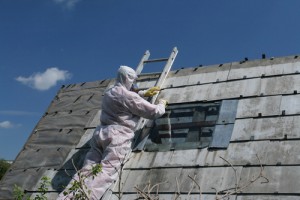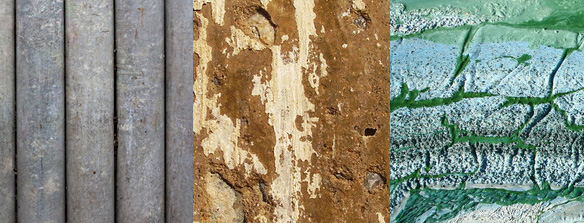 Asbestos and asbestos testing have been in the news on and off for decades now, which can make you wonder why it is a still a problem and what the associated health risks are. To better understand the problem and solutions, it is important to have some basic knowledge of asbestos and how people have used it.
Asbestos and asbestos testing have been in the news on and off for decades now, which can make you wonder why it is a still a problem and what the associated health risks are. To better understand the problem and solutions, it is important to have some basic knowledge of asbestos and how people have used it.
About Asbestos
Asbestos is actually a naturally occurring mineral group that is able to withstand high temperatures and corrosion. All six types of asbestos are composed of fibrous crystals that are long and thin. It is durable and can withstand a high amount of physical stress.
There are two divisions for asbestos:
- Serpentine
- Amphibole
Of the six asbestos minerals, only chrysotile is categorized as serpentine. Chrysotile is considerably more flexible than the other types of asbestos. The remaining five types are amphibole:
- Amosite
- Crocidolite
- Tremolite
- Anthophyllite
- Actinolite
The Problem
Because it has so many desirable qualities of a strong building material, asbestos was used in many construction projects and building materials until the 1970s. It was also commonly used in heating insulation and with electrical work. By the time the potential health risks were discovered, asbestos was already used in many newer homes and buildings all over North America.
Firmly contained asbestos, such as in tile or tightly bound in insulation, pose no significant health risk, just like naturally occurring asbestos. However, once the enclosure containing the asbestos is broken, the material can become airborne, where it becomes extremely dangerous to people and animals.
The Health Risks and the Need for Asbestos Testing
Asbestos is a carcinogen, meaning it is extremely harmful to your lungs. Several diseases associated with asbestos exposure:
- Pleural plaque and effusion – the hardening of tissue or buildup of fluid around lungs and the diaphragm
- Asbestosis – the scarring of lung tissue that can lead to lung cancer
- Lung cancer – generally forms in the cells lining the lungs’ air passages
- Mesothelima – cancer of the tissue around the lungs and diaphragm
Not all of these diseases have symptoms, so you may not be aware that there is a problem. This is why asbestos testing is so critical; once you aware of the exposure, you can seek medical attention.
Minimizing Asbestos Exposure Through Limits and Asbestos Testing
Construction workers are most at risk, but there are also risks to people who have asbestos in their homes. While asbestos mining has not been stopped, it is under strict regulations by the Canadian government. Since chrysotile mining is roughly 95% of the focus, things made with asbestos today are much safer than in the 20th century. However, there are still risks for older building and facilities, as well as for newer buildings that have asbestos products.
Before beginning any do-it-yourself projects that involve working with insulation or tile, you need to find out what material was used to make them. In the event asbestos was one off the materials, you should follow these precautions.
- Dress in appropriate clothing and use an approved single-use respirator.
- Secure the area, and keep people and pets away from it.
- Dampen the material before you begin to reduce how much asbestos become airborne.
- Place all asbestos materials in a sealable bag and contact your local municipality for proper disposal methods.
- Thoroughly clean the workspace and clothing. Use a damp cloth to clean up the area. Do not use a vacuum as this will help release the asbestos into the air.
Before beginning any project that could expose you to asbestos it is best to seek professional advice and have professionals conduct asbestos testing.












